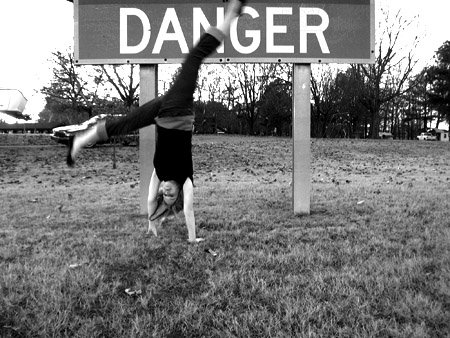


 I've finally tested out my screen printing set-up! (remember the tabletop I built a week or so ago here)
I've finally tested out my screen printing set-up! (remember the tabletop I built a week or so ago here)I knew the printing area would be fine, but was more worried about making my exposure at home. To do so, I bought a 500-watt halogen utility light for $10. After watching a lot of YouTube videos and reading contradictory information about how to do everything, I made my own executive decisions based on my prior screen printing knowledge. A few things I did in case anyone out there is thinking of setting up a similar area (and sorry, this is going to get a bit technical!):
1. While assembling my utility light, I took out the glass that normally filters the light. This does make the lamp a bit more dangerous (it gets very hot!) so I would suggest to anyone out there considering this, to stay by your light during the exposure time, just in case, and be sure your screen is a good distance away from the light (15-20") because nylon melts!
2. Because I am impatient, I guessed on my first exposure time rather than making a test area (best option: do a test area, of course). I used 12 minutes (based on internet research--not very scientific) and got a pretty good exposure minus a little unwanted texture that was either the result of a slightly short exposure time or a bad washing-out method (internet advice told me it would be good to use a scrub brush to aid with washing out when doing so in a bathtub, but I am pretty sure this is where the unwanted texture came from). Also, take note that this exposure time was with a white screen (yellow screens filter the light a bit so you need to add time) and an image on transparency. I tried a second image on the same screen, on copy paper with vegetable oil, and it wasn't nearly enough time.
3. To keep my transparency flat, I placed the glass from a picture frame on top of it during exposure time (if you are used to using an exposure unit, think upside down for making an exposure with a lamp--screen on bottom, glass on top, image placed upside down). I had a piece lying around because I had to replace the glass in that frame with plexi for an out-of-town art exhibit, but if you don't have that luxury, might I suggest getting a cheap, old, ugly frame from a thrift store that is around the size of your screen, and using that glass. To get even better results, I used some leftover foam from when I covered my tabletop (purchased near the batting area at the craft store--it's made for upholstery use and comes in 1" or 2" thick, I went with 1") and put that underneath my screen, in the "hollow" area. I laid an old black shirt on top of the foam to help absorb the light.
4. Since I don't have a power washer or even a hose I can use in the bathtub, I used emulsion remover to reclaim my screen (before, I've used bleach + a power washer). It did the trick with minimal scrubbing on my part. I used a scrub brush (from the cleaning aisle, nothing fancy) to help me out.
Since my screen had some unwanted texture, I'm going to try again this evening! I'm going to call this first run a success, however, since it was really close to perfect and I had no major issues. I hope to have new prints in the shop by Friday, made in my own dining room! Hurray, DIY screen printing!








No comments:
Post a Comment